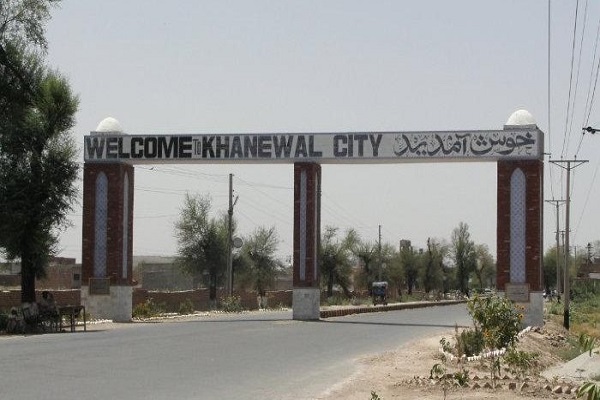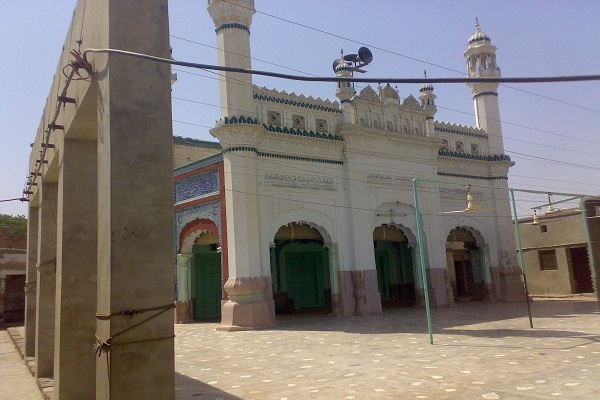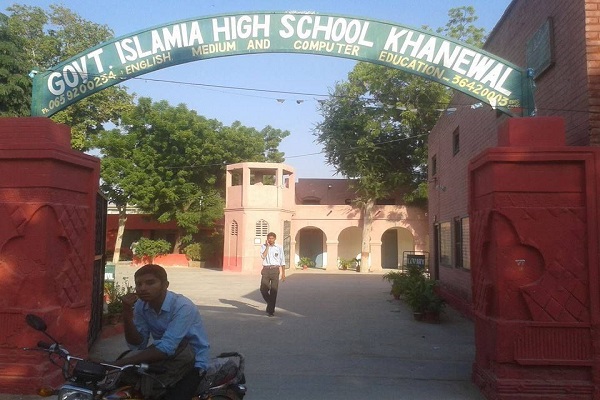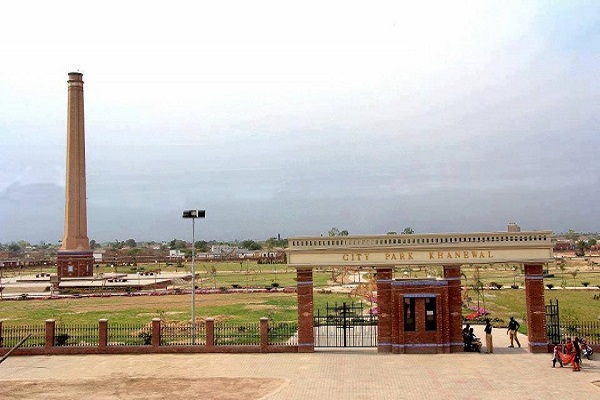Khanewal (original) (raw)
Khanewal is a Punjab Province district, Pakistan, located in the country’s centre, having an equal distance from Peshawar and Karachi. The district is bordered with district Jhang and district Toba Tek Singh on the north, district Vehari on the south, district Sahiwal on east and district Multan on the west, having an area of 4,349 square kilometres.
The coordinates of the district are 30’18 north, 71’56 east. It is further divided into six Union Councils. It is linked with Multan, Sahiwal, Lodhran, Vehari, Toba Tek Singh and Jhang districts through roads and Peshawar-Karachi Railway line which passes through the district. Khanewal is famous for its finest cotton in the world.
It has 17 Police Stations, 24 post offices, 20 branches of National Bank, 1 Sugar Mill, 7 Textile Mills and 71 Ginning Factories. The city is named as Khan-e-Wal after the earliest settler of Rajpoot caste, called Daha Rajpoot, who used Khan in their names. This article carries every detail regarding the city, including Khanewal History.
| Title | Description |
|---|---|
| Information | |
| Location: | Pakistan |
| City Council: | Government of Punjab |
| Towns: | 1 |
| Type: | Capital of Khanewal District |
| Local Language Name: | خانیوال |
| Province: | Punjab |
| Coordinates : | 30°18′N 71°56′E |
| District: | Khanewal District |
| Region: | Punjab |
| Elevation: | 128 m (420 ft) |
| Union councils: | 6 |
| Language | |
| Official Language: | Urdu |
| Native Language: | Punjabi |
| Other Languages: | Urdu, Punjabi, English |
| Government | |
| Type: | Government Of Punjab |
| District Coordination Officer: | Khalid Mahmood Sheikh |
| Area | |
| Total Area: | 4,349 km2 (1,679 sq mi) |
| Population | |
| Total Population: | 2,376,000 (2005) |
| Time zone | |
| Time zone: | PST (UTC+5) |
| Codes | |
| Postal code: | 58150 |
| Dialling code: | 65 |
| Vehicle registration: | Three letters beginning with K and random four numbers |
Table of Contents
Toggle
- Khanewal History
- Administration
- Population
- Khanewal Language
- Khanewal Weather
- Tribes and Clans
- Agriculture
- Industry
- Khanewal Postal Code
- Hospitals
- Places to Visit
- Khanewal Institutes
- Notable Personalities
Khanewal History
Ghaznavid Dynasty
The Kingdom of Rajpoot dominated northern India and Pakistan’s eastern portion at the beginning of 7th century. Sultan Mehmood Ghaznavi invaded his father’s Ghaznavid Dynasty and Shaihis in Kabul, in 1005, following by Punjab’s conquest. Rajpoots ruled the eastern portion of Punjab till 1193.
Mughal Era
The earliest settlers of the district were Daha and Khatters who use Khan in their names. Under the Mughal Era, the region of Khanewal was flourished and was notable for trade and commerce. After Mughal’s decline, the Sikh Empire occupied the region, and Muslims faced many Sikh rule restrictions.
British Era
British rulers ruled the area till Pakistan’s independence due to the junction of Khanewal-Wazirabad railway junction and considered British rulers’ well-planned town. The district contained a population of Hindus and Sikhs who migrated to India after partition. The people became Muslims dominantly due to missionary Sufi Saints.
It was declared a district in 1985 by taking two tehsils from District Multan, Kabirwala and Mian Channu. The city is the capital of District Khanewal.
Administration
The district contains four tehsils which are as follow:
- Jahanian
- Kabirwala
- Khanewal
- Mian Channu
Population
According to the census of 1998, the district had a population of 2,068,490. According to the Economic Survey in 2005; the region had a population of 2,376,000. As per 2017 census of Pakistan; the district had a population of 2.922 million.

Khanewal Language
Punjabi is considered the most widely spoken language of the district as it is said by 63 per cent of the population. At the same time, Saraiki is the second language, spoken by 26 per cent people of the district. Urdu, Hindko, English and Pashto are other languages spoken by the people of the District Khanewal.
Khanewal Weather
The climate of the region is dry and hot and have a long summer season. The summer season starts from April and ends in October having an average temperature of 34 degrees centigrade. The lowest temperature in winter is 3 to 5 degrees celsius.
Tribes and Clans
Main tribes and clans of the District are;
- Kmboh
- Arian
- Jatt
- Hiraj
- Niazi
- Utra
- Gujar
- Pathan
- Chadrar
- Rajpoot
- Sahu
- Rehmani
- Khiarah
Agriculture
It has fertile land and cotton, wheat and sugarcane are the main crops of the district. The people are very hardworking, and these crops are the source of their income.
Vegetables
- Chilli
- Coriander
- Garlic
- Ginger
- Onion
- Sugar beet
- Tomato
- Potato
Fruits
- Apple
- Apricot
- Banana
- Citrus
- Dates
- Grapes
- Guava
- Mango
- Plum
- Pomegranate
- Peach
- Pear
Livestock
- Mules
- Horses
- Donkeys
- Camels
- Bullocks
- Buffalos
- Cows

Industry
In District Khanewal, there are nine flour mills, seven textile mills, one sugar mills, two vegetable Ghee Mills, four Weaving Mills, one solvent oil extraction unit, number of cotton pressing factories, one Beverage unit, two woollen textile spinning mills and three polypropylene bag units.
Khanewal Postal Code
Postal Code: 58150
Area Code: 065
Hospitals
A lot of hospitals providing the best treatment to people, among which some are as follow:
- DHQ Hospital
- Fatima Clinic
- Amin Medical Complex
- Harris Surgical Hospital
- Ibrahim Welfare Hospital
- Hayat Medical Complex Hospital
- THQ Hospital
Places to Visit
There are many historical places and parks in the District. Some of them are as follow;
- City Park
- Yousaf Park
- Old Sabzi Mandi Park
- Forest Park
- Bukhtiyari Garden
- Wildlife Park
- Faisal Town Park
Khanewal Institutes
Leading educational institutions of District are:
- Punjab Group of Colleges
- The Smart School, Khanewal Campus
- Punjab College of Business Administration, People Colony
- The City School, Senior Branch
- The City School, Junior Branch
- Muslim College of Commerce and Computer Sciences
- Khanewal Public School and College
- Superior Group of Colleges

Notable Personalities
Notable people who belong to this region include:
- Maulana Tariq Jameel
- Syed Fakhar Imam
- Syed Hussain Jahania Gardezi
- Ghulam Haider Wyne
- Brig. Muhammad Yaqoob Ilahi
- Tasawar Hayat, Pakistani Scientist
- Har Gobind Khorana
- Masood Anwar (former Pakistan Cricketer)
- Rana Shabbir Ahmad (Pakistani Cricketer)
- Rao Iftikhar Anjum (former Pakistani Cricketer)
